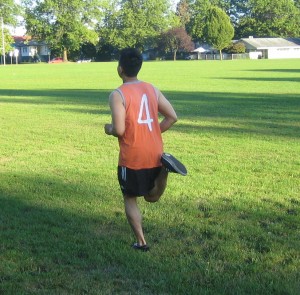Runners oftentimes end up with pain in the ball of the foot which is a condition known as metatarsalgia. The bones beneath the feet are called as metatarsals. While running, the impact can add pressure on the ends of these bones, thus resulting to foot pain.
Running extensively can lead to ligament injuries and irritation of the joint in the feet. There are certain types of foot injuries such as plantar fasciitis which involves inflammation of the tissue band that starts at the heel up to the arch of the foot. A heel spur is a bony growth that develops on the heel bone.
What are the signs and symptoms?
- Dull aching sensation in the ball of the foot
- Formation of calluses
- Pain that forces the individual to walk on the exterior of the foot instead of the ball
- Inability to walk barefoot due to intense pain
What are the causes and preventive measures?

Overuse injuries and running on surfaces that do not absorb shock are some of the usual causes of pain in the ball of the foot. Using the wrong shoes is also one of the main causes of foot pain among runners.
It is recommended to use sneakers that provide adequate support and has a wide toe box. If possible, avoid using those that have thick, high heels. It is best to check out a store that specializes on running sneakers so that the right shoes can be given. The running shoes must be half to one full size bigger than the regular shoes for extra room for the feet since they tend to swell while running. Always bear in mind that the running sneakers must be replaced every 300-400 miles since they eventually lose cushioning, shock absorption and stability. In addition, shoe inserts particularly metatarsal pads are also recommended.
Home remedies for pain in the ball of the foot
The pain in the ball of the foot often responds well to the RICE method (rest, ice, compression, elevation). Take note that this method can help reduce pain and minimize the swelling while at the same time preventing further injury.
The individual must rest and allow the affected foot to start healing by taking a break from running for a few days. The application of an ice pack is also beneficial. The affected area should be iced when pain is detected.
The ball of the foot can be compressed by wrapping with an Ace bandage. This can provide relief from the pain and reduce the degree of swelling. Do not forget to elevate the foot by propping it with pillows higher than the level of the heart.
Anti-inflammatory medications
Non-steroidal anti-inflammatory drugs (NSAIDs) are commonly used as a home treatment for pain in the ball of the foot. A doctor should be consulted if the foot pain persists or becomes worse and the RICE method does not seem to work. In some cases, customized orthotics might be recommended to take the weight off the ball of the foot.
If the individual engages in high impact sports, he/she is at risk for sustaining foot injuries. Those who love to run face a higher risk for injuries to the feet but those who are physically active might also end up with foot injuries.
